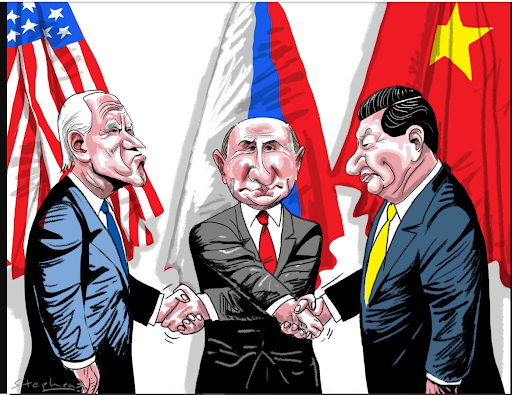Understanding the International System
Realists claim that in various historical eras, the nature of polarity mostly drove international system and there is a close, discernable link between the nature of polarity and the world’s stability or instability, war or peace. Polarity identifies the number of actors in the international system as the most important variable in determining the character and direction of global politics. Neorealists assert that the lesser the poles on the world stage, the more stable and peaceful the world. The more the power is distributed, the more clashes of interests and thus more chances of violent confrontations.
There are three types of polarity: multipolarity; bipolarity; and unipolarity; it is necessary to understand these to fully discern the international system.
- Multipolar system means the distribution of power among more than two nations or coalitions. In such a system, the power is concentrated in more than two centres. These alliances may be formed for specific purpose and could be time-bound until the cherished collective objective is achieved or becomes irrelevant. The classic example of a multipolar world was the nineteenth-century Europe. Similarly, the world today is also considered multipolar as the power is concentrated in more than two centres.
- Bipolar is characterized by two dominant and roughly equally powerful “superpowers” or blocs at the world stage. The Cold War era in which the US and Soviet Union represented two opposite blocs is a typical example of a bipolar world. Though the Soviet Union’s pole was far weaker than the Western one, in discourse that era is labelled as bipolar. Balance of power works best in such a situation as this balance deters the opponent and minimizes incentives for either side to initiate war. That is one of the reasons why the US and Soviet Union never confronted each other during that period despite having a number of serious irritants.
- Unipolarity represents a single superpower dominating world affairs. Initial years of post-Cold War era, when China had not yet emerged as a potent power, are considered a US-led unipolar world order. In a unipolar world, according to hegemonic stability theory, world may be more stable as there are no opposing poles and the world is led by a single power that can keep the nations and their interactions under its check. But it depends purely on the hegemon how justly it deals with the various contesting forces on their contending issues.
According to realists, the world is anarchic and nations must act best according to their national interests. Accumulation of maximum power is mandatory for states to sustain in this “lawless” international system. World affairs run smoothly and peacefully when there is a balance of power among various opposing poles or it is dominated by a single hegemonic force that plays the role of a just superpower. A single superpower, as per realism, can work as a world authority if it is a just hegemon and also possesses such a level of powers that it can gain control over the rest of the world.
For further study on this topic, download this research paper. Thanks


